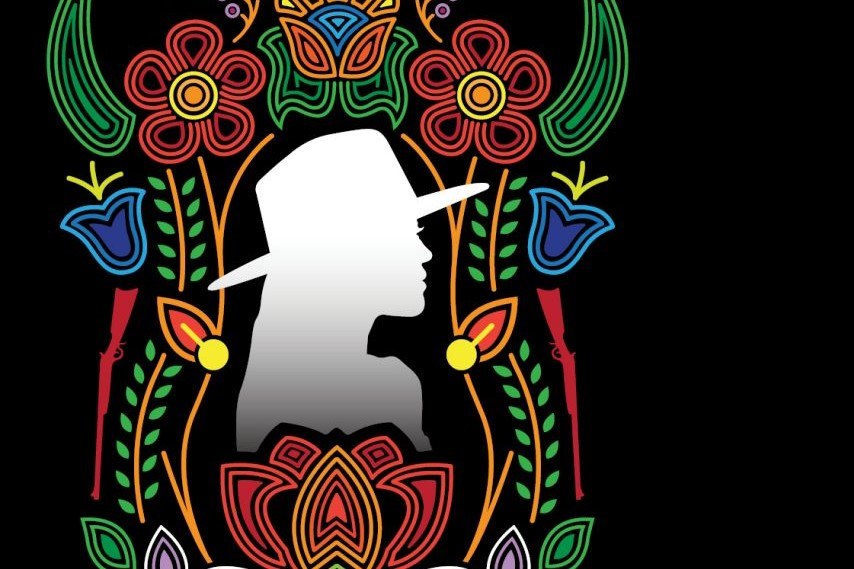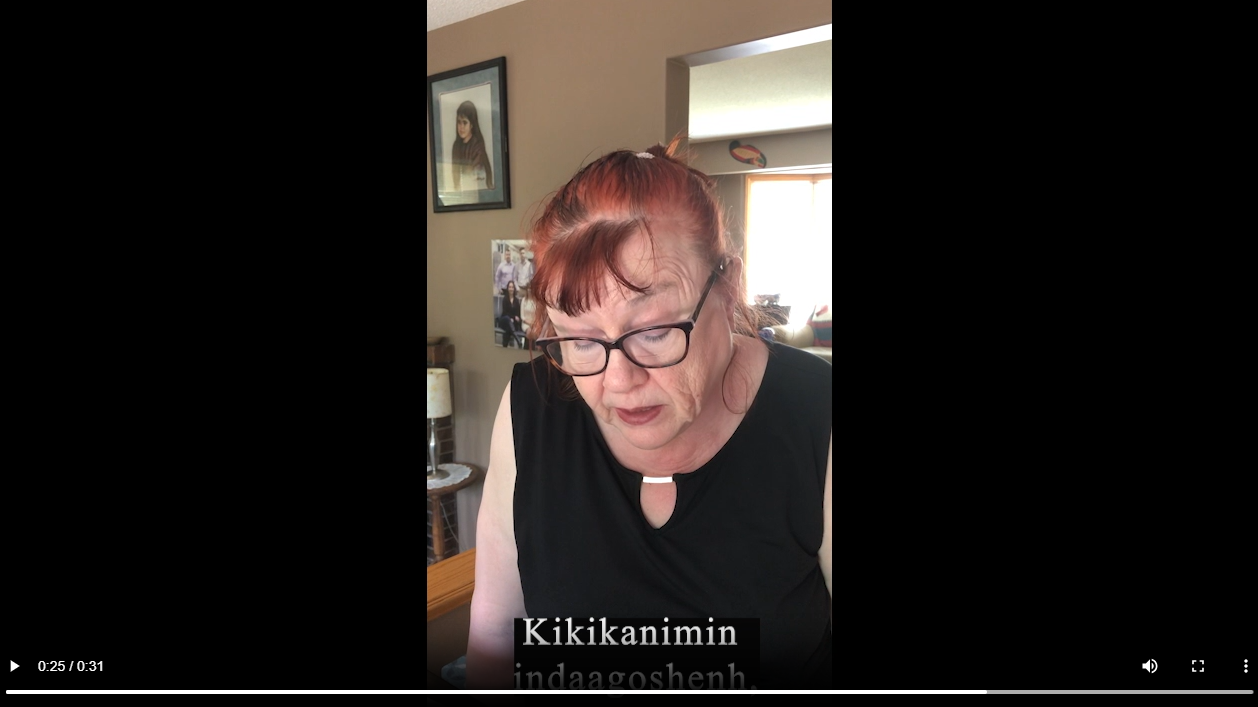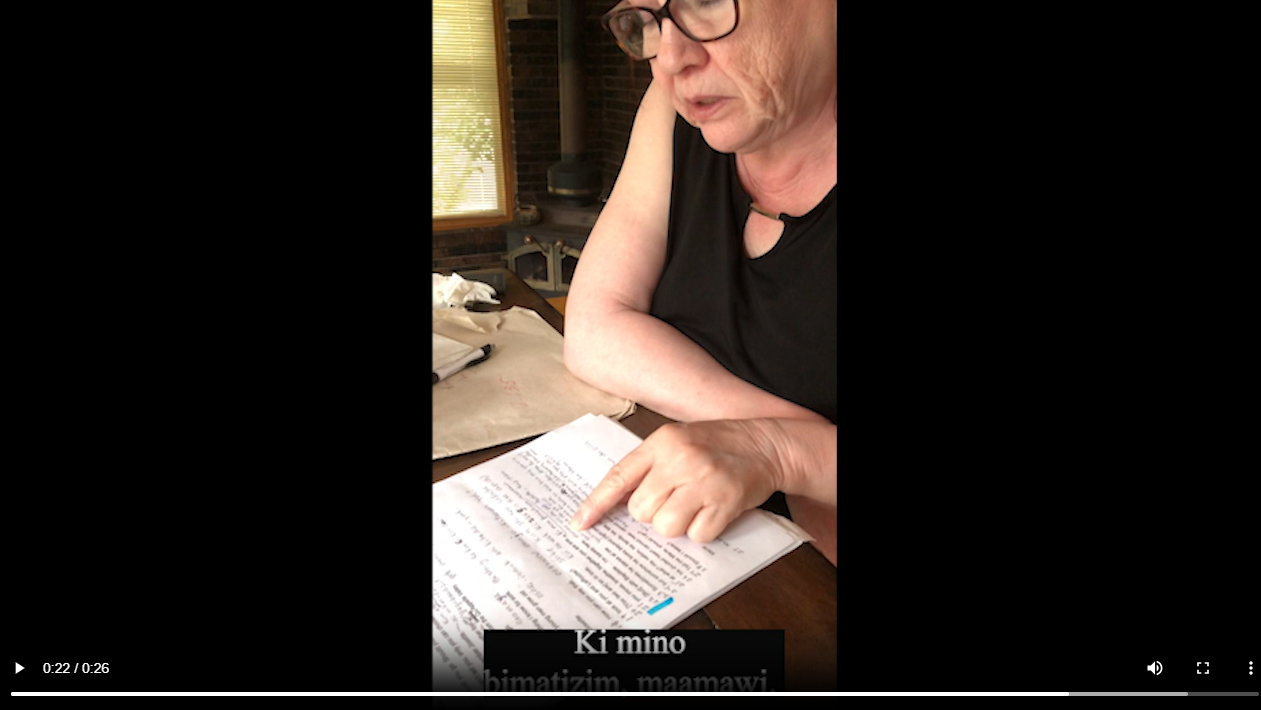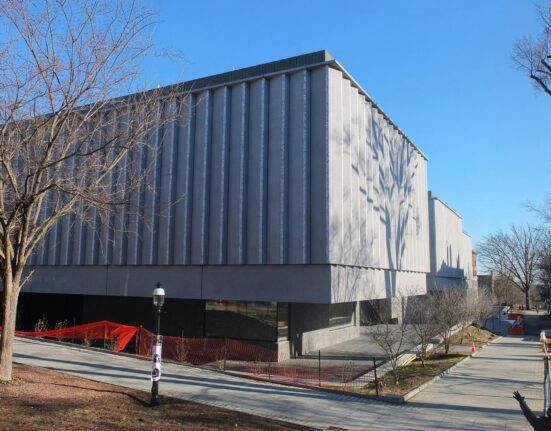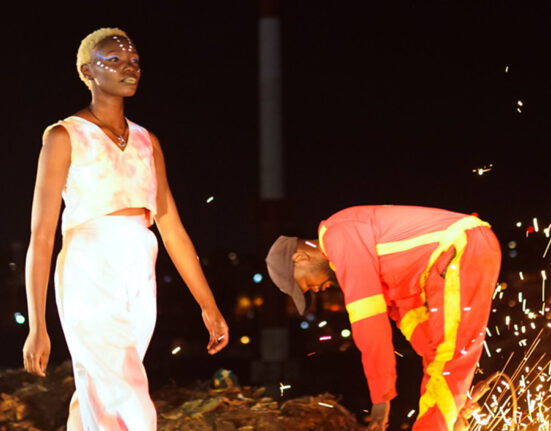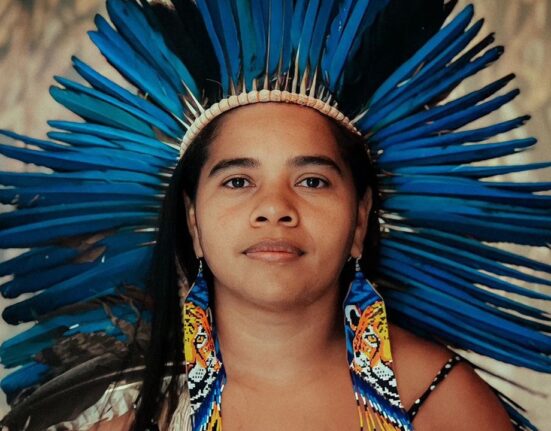November 23, 2023 —
On November 18, 2023, Manitoba Opera premiered Li Keur: Riel’s Heart of the North, the first full-scale opera developed and performed by a predominantly Indigenous team of creative artists on a Canadian mainstage. Written by Métis storyteller and poet Suzanne Steele with music by UM alumnus Neil Weisensel and Métis fiddler Alex Kusturok, the opera is a celebration of Métis languages, music, and culture.
Li Keur is one of several Indigenous operas created since the beginning of the Truth and Reconciliation Commission. These include Tomson Highway and Melissa Hui’s Pimooteewin/The Journey, Spy Dénommé-Welch and Catherine Magowan’s Giiwedin/The North Wind, Yvette Nolan and Dean Burry’s Shanawdithit, and Marie Clements and Brian Current’s Missing (on missing and murdered Indigenous women and girls). Métis composer Ian Cusson is also currently working on three opera projects, including a brand new work with Cherie Dimaline on her novel Empire of Wild, centring on a Georgian Bay Métis community.
Making music representative, instead of offering up representations from the outside
According to Desautels Faculty of Music musicologist Dr. Colette Simonot-Maiello, you can understand how important Li Keur is for the Canadian opera community when you compare it to Harry Somers and Mavor Moore’s 1967 Centennial opera, Louis Riel.
“Until recently, Louis Riel was considered Canada’s most famous opera, but, despite its subject matter, Somers’ opera is not really an Indigenous work,” says Simonot-Maiello, who previously examined Louis Riel in her research published in the University of Toronto Quarterly Journal [Volume 87 Issue 4, Fall 2018, pp. pp. 73-82].
“It was written by two white men from Toronto with no Indigenous participation and really problematic Indigenous representation,” she says.
When the Canadian Opera Company remounted Louis Riel in 2017 to mark Canada’s sesquicentennial, it was apparent that this opera had become hopelessly outdated, even with Indigenous participation and efforts to update the staging. The 1967 opera uses Riel as a pawn for nation-building, co-opting him to promote the new quintessential multicultural and bilingual Canadian, rather than trying to represent Métis identity and culture authentically. The opera is in English and French, with a smattering of Latin and Cree. Somers and Moore included two Métis folksongs in the opera, along with an aria constructed from a Cree text and an appropriated Nisga’a melody (that has since been removed from the score). The rest of the opera’s music could best be described as atonal and modernist, meant to gain Somers attention on the world stage.
Unlike the 1967 opera, which presents an account of Riel’s political life, Li Keur’s story is a mystical tale loosely based on historical documents. Suzanne Steele travelled through the Métis homeland across Canada to do archival research and hear people’s stories in preparation for writing the story for Li Keur. Métis women, who have generally been overlooked in history and literature until recently, are foregrounded here. 21st-century Joséphine-Marie travels back to 1870s Montana where she meets the sharpshooter Josette travelling with Louis Riel. They encounter the black geese of fate, a ghost chorus of ancestors, and the bison brigades.
“There is a point in the show when the whole chorus comes out – even the children’s chorus and sings about being displaced. A tiny coffin gets pulled across the stage. I find this moment so resonant because it made those historical facts so immediate and real for me.” says Charlene Van Buekenhout, who plays Josephine-Marie.
“The same thing for the end of the opera, all of the characters, and the chorus come out to sing to my character to tell me that I am their future, to have courage, to tell their stories, to keep them alive,” says Van Buekenhout.
“It’s very moving and encapsulates the idea that your ancestors are with you, that they lived so that you can be here, and that sense that you are part of something larger than yourself, supported by your community,” she adds.
Van Buekenhout is no stranger to forming community through theatre. She is also the Artistic Producer of Echo Theatre, a company which produces innovative new theatre designed to engage all audiences. She has taken up the torch to help produce Michif language cultural productions.
A new way of bringing endangered languages to life
Indigenous languages are at the heart of this opera and the process created to document the text and help the singers learn it is central to the success of Li Keur. Seventy percent of Li Keur is sung in Southern Michif, French-Michif, and Anishinaabemowin – all of which are considered vulnerable or endangered languages – with the remainder in French and English.
The text of the work was developed with Indigenous language keepers who contributed to the development of an open-source online database of all the text used in the opera, the Michif/Anishinaabemowin Pronunciation Database. It is comprised of line-by-line written translations of the libretto, including audio recordings of translators speaking Indigenous languages, and was made possible in part through a Social Sciences and Humanities Research Council grant that was awarded to Steele and Weisensel in 2020. Opera singers typically have to study lyric diction for years in order to understand how to articulate, pronounce, enunciate, and link words and phrases in singing—in fact, entire university courses are dedicated to lyric diction of European languages like Italian, French, and German.
To learn the diction of a language that may never have been used in art music, much less systematized to the extent that European languages typically have been for opera singers, is challenging to say the least. In addition to the online database, language keepers have visited rehearsals to hear how the text is being sung and make adjustments if accents or emphases were in the wrong place.
For Van Buekenhout, hearing the Indigenous languages was familiar, thanks to University of Manitoba Southern Michif classes she took several years ago to connect more closely with her Métis background.
“I’ve taken Intro to Michif 1 and 2 at UM, Van Buekenhout says.
“These courses gave me an understanding of the Southern Michif language, and while my skills are still very beginner level, I was able to recognize when Southern Michif was used in the piece, and able to engage with it on a slightly deeper level than the Anishinaabemowin which I am less familiar with in a language learning context,” she says.
“In the show I don’t speak any of the Southern Michif, but I recognize when it is being sung, and even some of the words, which is a great feeling,” Van Buekenhout adds.
“At one point in the show, there is a party where everyone sings “La montang torchu” a southern Michif song that I actually know the words to, thanks to my language learning, and I get to sing along, which feels amazing. I’m still a ways away from being a confident speaker in Southern Michif, but the courses at UM have given me a foundation that I am so grateful to have. It has enriched my experience working on this show,” she says finally.
UM offers several Indigenous language courses, which are accessible to all who want to take them. You can learn more about these courses on the UM Department of Indigenous Studies page.
In order to create music for this text, Neil Weisensel visited the translators and recorded them speaking so that he could internalize the cadence and rhythm of the languages. The sounds of the languages themselves, in addition to Métis fiddling tunes, provide the core of the musical score. The Red River Jig is especially prominent, along with other traditional and contemporary Métis fiddle tunes by Alex Kusturok.
“Since this is a completely new work, there are no YouTube videos, or, for that matter, any recordings to refer to for pronunciations,” says Desautels Faculty of Music alumnus Steve Denby, the Chorus Director for Li Keur.
“Certainly, with this work, one of the biggest challenges is the use of 3 traditional (aural) languages, plus English and French. This meant that no single person spoke all of the languages being used, and many spoke only one,” says Denby, who is Métis.
“As Chorus Directors, we used these recordings extensively when creating our own recordings to assist the choristers in learning their music,” says Denby.
The dedicated work of the elders and knowledge keepers was especially important for helping the choristers get the music right, as part of Li Keur’s community-building involved recruiting Indigenous and Métis participants from outside classical music.
“The chorus was mostly people who had never been involved in an opera and were not trained singers or even music-readers,” says Denby.
“Thus, for many of the choristers, a large part of the music learning was rote and repetition. In addition, we did have support from knowledge keepers through the learning process to ensure that what was being sung was acceptable and coherent to a traditional language speaker’s ears,” he says.
“Working in Indigenous languages has been different from any language I worked on while in school,” says Desautels Faculty of Music alumna Keely McPeek, who performs as Marie Serpente, of the experience.
“Instead of having a dictionary to study from, I was lucky enough to get to work with language keepers Donna Beach and Debra Beach Ducharme,” she says.
“Working with them involved mostly listening and repeating the Anishinaabemowin until I got it right. It’s been amazing to work with the sisters – once even at a Salisbury House! – getting to know them and being a part of Indigenous language revitalization,” adds McPeek.
Building not just a work of art, but also a community
Li Keur has become a central core around which a community—of storytellers, language keepers, composers, musicians, dancers, and others—has gathered and the work itself has emerged from this community. Community membership has become more important than elite performance ability, as evidenced by the chorus, which features primarily Indigenous community members of all generations and an array of musical abilities.
“As the director of the Chorus, I have found the building of friendships and community the most satisfying for me,” says Denby.
“I am always in awe of the way music can impact emotionally,” he says.
“Even after numerous rehearsals and a complete knowledge of what is to come, I am still moved by the music when it really ‘works’, even when the text is not in a familiar language,” he adds.
As Steele indicates, the opera puts the Métis people and relationship at the centre while simultaneously redefining opera through an Indigenous worldview. This project has far-reaching cultural implications for the Indigenous community in Manitoba and, ultimately, this opera is more about building community than it is about a performance.
“I cannot say enough about the personal significance this opera has for me as a young Métis woman with ancestry in Red River,” says Desautels Faculty of Music alumna Camryn Dewar, who performs in the chorus, and has, alongside McPeek, served as a community ambassador for the opera.
“It has been so life-changing to be part of the first Métis opera in existence, especially one with Indigenous languages, Métis folk songs, fiddling, and even jigging!” says Dewar, who is now on an Apprenticeship with the company, participating in a mentorship with principal mezzo-soprano Rebecca Cuddy.
“I remember being in the Li Keur chorus rehearsals with my father back in 2021, singing Métis folk songs that my grandmother loved, in Michif, with a huge group of other Indigenous people from our community, and my heart was so full. I had never felt so connected to my culture, my people, and my ancestry before, and it was incredibly powerful,” Dewar says.
Through her work as a community ambassador, Dewar has performed parts of Li Keur at many different events.
“I met local elders, and while sharing bannock and tea, I listened to their life stories, enjoyed live fiddle music, and admired beadwork and weaving crafted by my Indigenous kin, deepening my connection to the land, my ancestors, and my heritage,” she says.
“Experiences like this have created such a rich support network of Indigenous peoples across Manitoba and Western Turtle Island. The bonds we have created throughout the last four months are incredibly unique and impactful,” Dewar adds.
McPeek remembers performing excerpts of Li Keur at a Manitoba Opera event back in April 2023.
“I spoke to some elders afterwards and they told me that they never thought they could feel comfortable at the opera, but they did that day,” says McPeek.
“That’s when I realized how important this project really is and how powerful it could be – something I’m honoured to have played a small part in,” she says.
“I hope that Indigenous audiences can take away from this opera that they deserve a space in that world. Our stories are important and worth being told on the big stage” says McPeek.
Manitoba Opera’s production of Li Keur: Riel’s Heart of the North runs November 18, 22, and 24 at the Centennial Concert Hall in Winnipeg. It features eight vocal soloists, a narrator, Michif choirs, fiddlers, dancers, and the Winnipeg Symphony Orchestra. Desautels Faculty of Music alumni Neil Weisensel, Keely McPeek, Camryn Dewar, Steve Denby, and Julie Lumsden were all involved in the creation of this opera, as well as Desautels Major Practical Study instructor James McLennan. To purchase tickets, please visit Manitoba Opera. This article was made possible with help from the cast of Li Keur, and research from Desautels Faculty of Music musicologist Colette Simonot-Maiello and Master of Arts in Music Research student Lukas Sawatsky.

